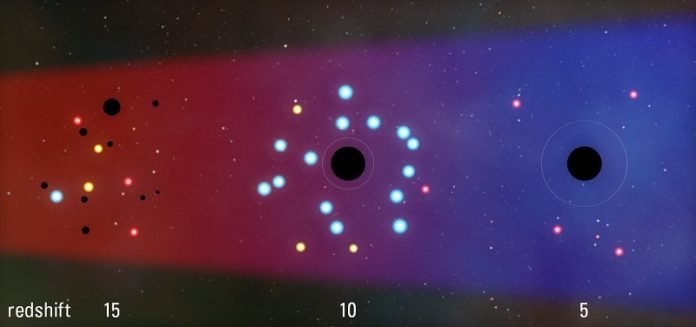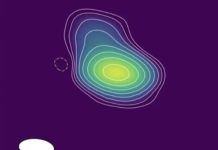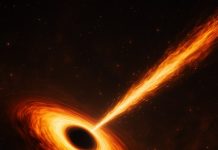
Astronomers have made an exciting discovery with the help of the James Webb Space Telescope (JWST), finding tiny red dots in space that are actually some of the earliest galaxies ever formed.
This new find is shaking up what we thought we knew about how galaxies and their mysterious black holes started out billions of years ago.
In the past, scientists believed that galaxies formed slowly over time.
They thought stars appeared first, lighting up the universe, and black holes, those strange and powerful spots where not even light can escape, came much later.
These black holes were seen as cosmic caretakers, sometimes bursting with energy to control the birth of new stars and keep everything in balance.
But the JWST showed something different. It found that the very first galaxies were already hanging out with big black holes right from the start.
These galaxies were shining brighter than expected because of quasars, which are super bright areas created by black holes pulling in gas and dust around them. This means that stars and black holes grew up together, challenging the old story of galaxy formation.
“Quasars are like monsters in the cuckoo’s nest,” explains Joe Silk, a professor who helped make this discovery. He means that quasars are incredibly bright and powerful, often outshining everything else in a galaxy.
The new theory suggests that in the universe’s early days, black holes and stars actually helped each other grow. This partnership was a good thing at first, as they both made each other stronger.
But after about a billion years, the black holes started to change. They began to push gas out of the galaxies, which made it hard for new stars to form. This switch from helping to hindering star formation is a big deal because it tells us more about how galaxies like our own Milky Way came to be.
This new timeline suggests that the shift from black holes helping to hurting star formation happened around 13 billion years ago, just a billion years after the universe began.
Knowing when this change occurred helps astronomers figure out what to look for when they study space, making it easier to understand the story of galaxies and black holes.
To make sure this new theory is right, scientists need to do more research. They plan to use computers to simulate galaxies and black holes growing up together. This is a big task that requires a lot of computer power and money.
In the meantime, more observations with telescopes like the JWST will help. The telescope will study distant galaxies more closely in the coming years, giving scientists more information about how the universe’s first galaxies and black holes formed.
This discovery is exciting for astronomers, including Mitch Begelman and Joe Silk, who are looking forward to seeing how their new idea is received by others in their field.
They believe that the JWST’s findings are just the beginning of understanding the complex relationship between stars and black holes in the early universe.
Source: KSR.



